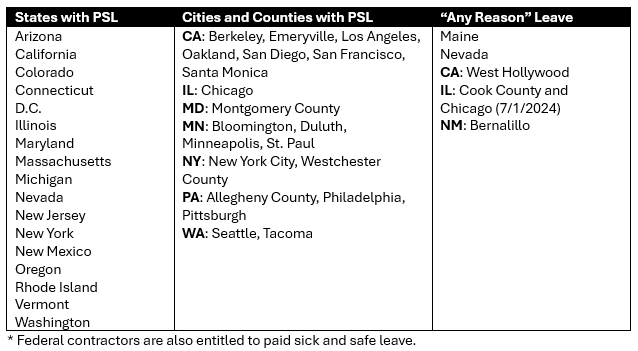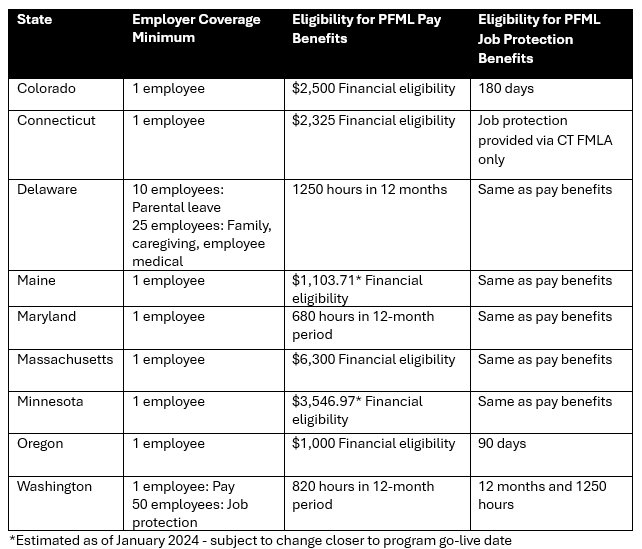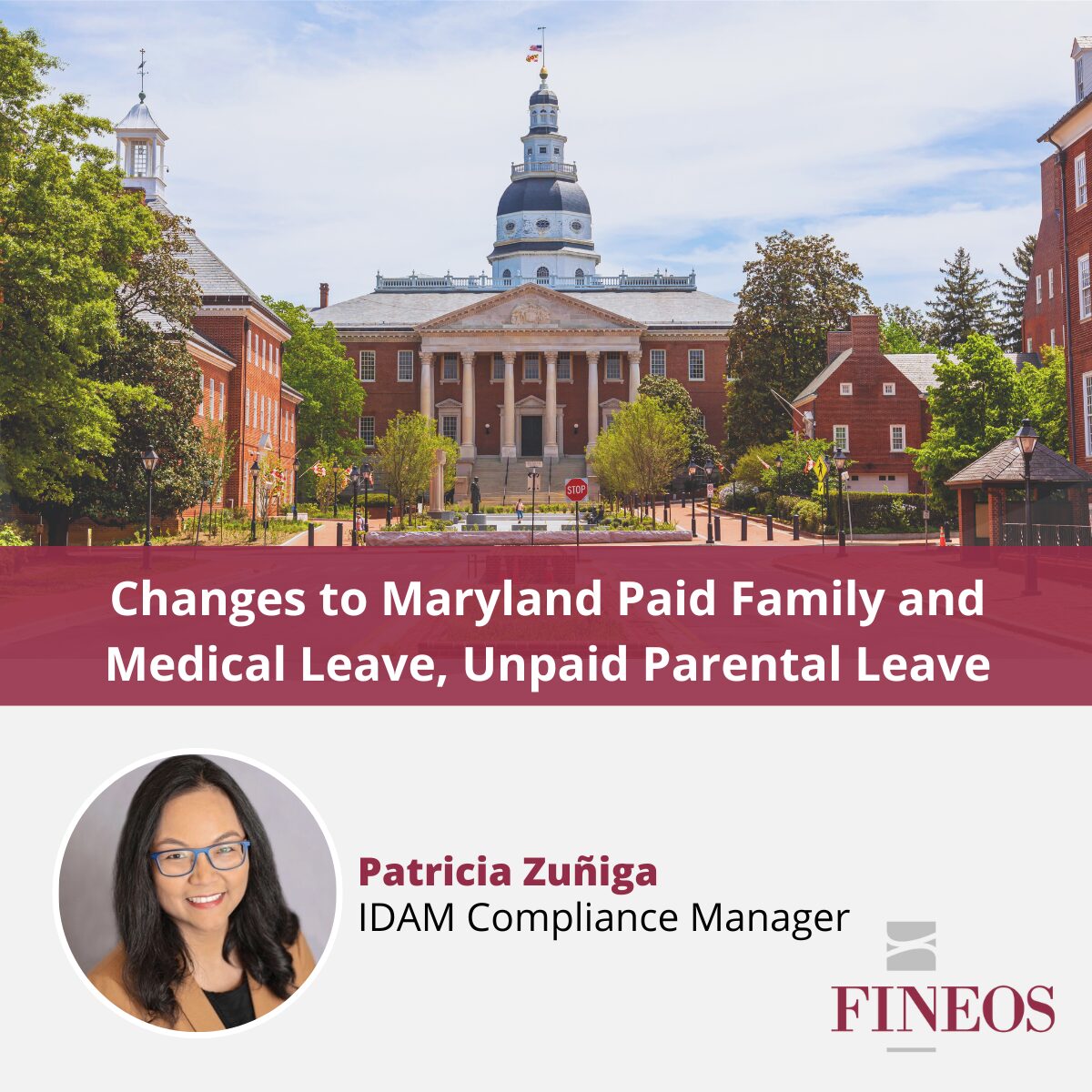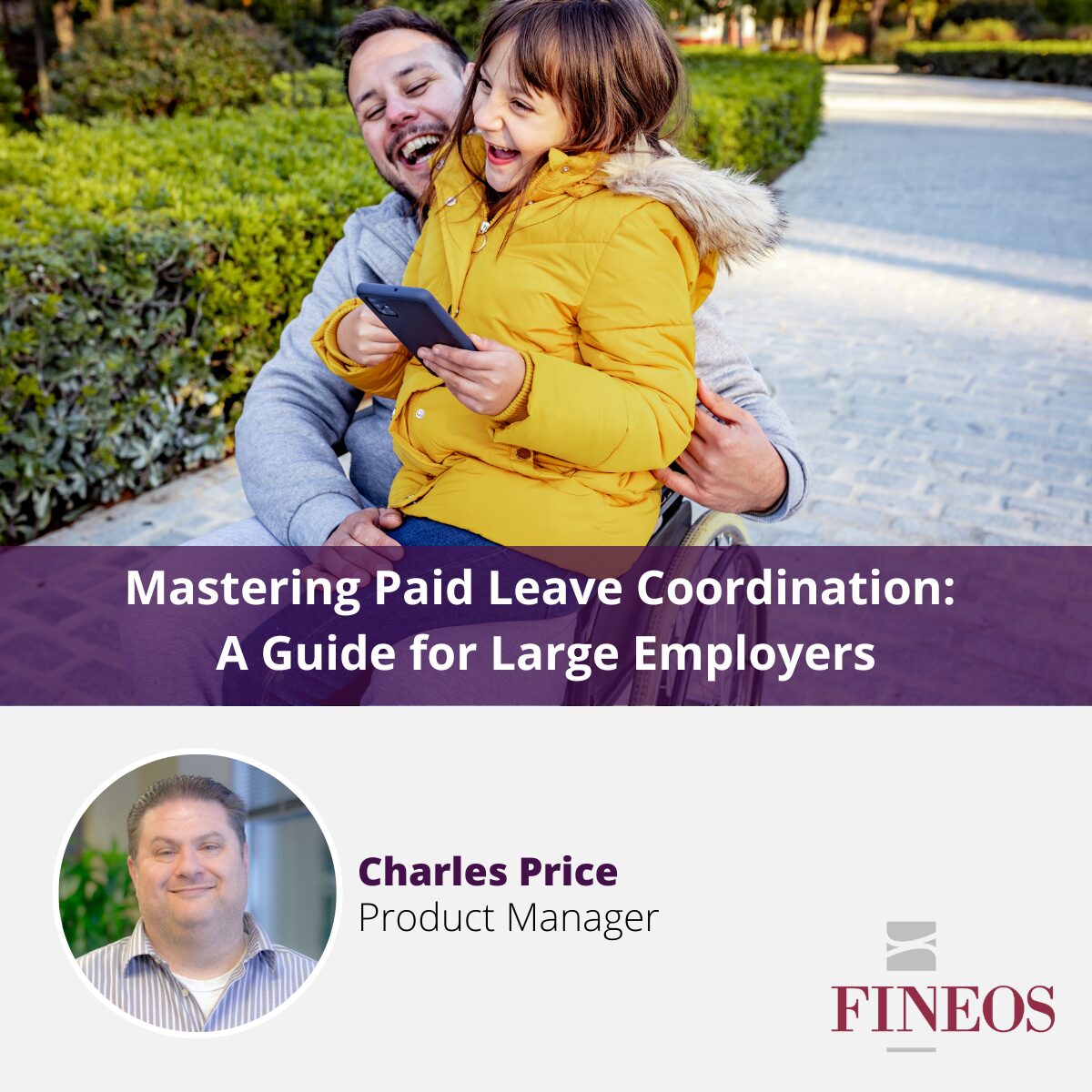In Part I of this story, we discussed the “Kyte Baby” incident where a mother of a newly-adopted preemie was denied a workplace accommodation by the small business that employed her. Neither the Family and Medical Leave Act (FMLA), the Americans with Disabilities Act (ADA), nor state law in Texas afforded her parental leave or the ability to work from home as an accommodation. The case stands as a real-life example of the gaps in leave rights for U.S. employees at critical moments of their lives. But progress is on the horizon. The strongest winds of change in the absence industry over the past few years have focused on expansion in paid leave programs.
Paid Sick and Safe Leave Laws help some employees
In the decade from 2010 to 2020, paid sick leave ─ and in some cases, paid sick and safe leave (both referred to here as PSL) ─ mandates arrived with vigor in the absence sphere, with Connecticut leading the way in 2011, followed by California and Massachusetts. A multitude of states, counties, and cities piled on the trend, and by 2024 we have broad coverage:

As comprehensive as this looks, let’s break down the details.
The Pros: If an employee lives in one of these jurisdictions, chances are high they will be entitled to PSL benefits. Most employers are covered by these laws, although the minimum employee threshold varies. And in most jurisdictions, employees can access the leave just 90 days after they’ve begun work for an employer, a low threshold. Significantly, the leave is both job-protected and fully paid at an employee’s normal rate.
The Cons: In most states, employees accrue leave as they go, typically one hour for every 30 hours worked. Employers can typically opt to forgo the accrual method and instead frontload employees’ time, which will usually prevent the employer from having to carry over unused time from year to year. The maximum an employee can accrue on an annual basis varies from 24 to 80 hours, with most settling around the 40-hour mark. For most full-time employees, we are looking at one week of paid leave to be used for an employee’s or family member’s illness, preventive health needs, and in some cases, needs related to being a victim of domestic violence, sexual assault, or stalking. It’s important to note that almost all these laws allow an employer’s existing PTO policy to satisfy the laws’ requirements. If an employer already provides a minimum of 40 hours (depending on jurisdiction) to be used for the same reasons as the law requires ─ or any reason at all ─ an employer need not provide any additional benefit.
That caveat should not diminish the value and importance of these laws. They provide a much-needed benefit to many and have enhanced benefits in workplaces that previously provided zero days of paid time off. But in the situation faced by Kyte Baby’s employee or in the case of an employee’s serious illness, a law like this would provide only a temporary stopgap.
Paid Family and Medical Leave (PFML) programs advance
Where we are currently seeing the most meaningful expansion in employee leave benefits is in the PFML arena. Obviously, there is the pay side: PFML programs provide a weekly benefit consisting of a percentage of an employee’s salary, maxing out at an average of about $1000/week. In terms of duration of available leave, these programs are similar to the FMLA, typically providing 12 weeks or more of job–protected time off.
But it is employer coverage and employee eligibility where these programs really shine. They provide ─ almost across the board – expanded employer coverage and liberal employee eligibility thresholds. While they get the most attention for providing income replacement, in most states where they have been enacted, PMFL programs have also served to significantly expand job protection for employees who do not meet the FMLA’s requirements. Typically, the employee eligibility test for PFML is a low financial threshold, ranging from $1000 to $6300 earned over the prior year. In most states, this means that a minimum wage worker can reach eligibility within 2-3 months, instead of the 12–month minimum under the FMLA. On top of that, in almost all states, the law expands employer coverage to those with just one or more employees. In the case of Kyte Baby’s employee, if Texas had a PFML program consistent with most other states, she would have been eligible to take extended leave to care for her premature child.

The Future of PFML in the States
In last year’s legislative sessions, we saw proposals for new PFML programs in over 15 additional states, including Arizona, Iowa, Michigan, Illinois, Missouri, North Carolina, New Mexico, Pennsylvania, Tennessee, and Virginia, along with expansions proposed in every existing PFML state. Time will tell which state is the next to cross the line.
Texas, where Kyte Baby is located, passed a bill effective January 1, 2024, permitting insurance companies to issue voluntary PFML coverage in the state, perhaps signaling a disinclination to enact a mandatory entitlement. The new law enables employees to access paid benefits if they work for an employer that voluntarily chooses to offer a PFML insurance product, but it does not expand access to job-protected leave. Notably, while the state did enact a paid parental leave program for certain state employees, a bill that would have provided paid parental leave for private-sector employees failed last year without a single hearing.
Federal PFML Program Looms Large
Federal PFML remains a priority in Congress, and a bipartisan effort led by Sens. Kirsten Gillibrand (D-NY) and Bill Cassidy (R-LA), and Reps. Chrissy Houlahan (D-PA) and Stephanie Bice (R-OK) has established a working group to explore a federal paid leave program. The working group recently issued a Request for Information seeking input on the scope, funding, and role of the federal government in the potential program. We’ll be watching to see whether a federal program will provide expanded employer coverage and employee eligibility or will simply add pay to an employee’s existing job-protection entitlements.
In recent years, federal legislators have signaled acknowledgement of the gaps in our current entitlements that leave many Americans one accident away from losing their jobs. For example, the Job Protection Act, introduced in early 2023, would have reduced the FMLA’s employee eligibility requirements from 12 months and 1250 hours to 90 days. It would also have reduced the employer coverage threshold from 50 employees to 1 employee, effectively mandating coverage for all employers. A slew of other proposed amendments would have expanded the FMLA in a variety of ways, including adding new covered family members for which an employee could take leave (such as domestic partners, adult children, parents-in-law, grandparents, grandchildren), expanding permissible reasons for leave to include preventive care, attending the school activities of one’s child, and needs related to being a victim of dating violence, domestic violence, sexual assault, sex trafficking, and stalking. Those none of these proposals has been enacted, attention has been and continues to be drawn to these gaps.
Progress in Leave Benefits Marches On
While progress has been made, significant gaps in workplace leave benefits remain due to both restricted availability under existing programs (FMLA, PSL), and a lack of widespread adoption of more generous programs (PFML). Efforts toward a potential federal PFML program and FMLA expansion signal broader acknowledgment of the gaps that Americans continue to experience during the most trying times in their lives. While the Kyte Baby case drew attention to the one family’s case, it is emblematic of the challenge countless others face during critical life moments every day.
FINEOS compliance experts like Lori help ensure customers with FINEOS Absence and FINEOS IDAM stay up-to-date with the latest changes to federal, state and local leave laws. To find out more about our absence management solutions, contact us.


